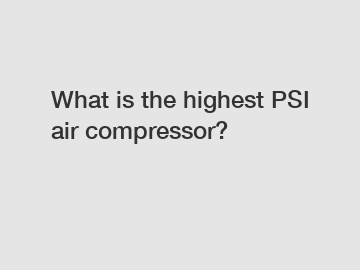What is PCB buffer?
In the realm of electronics, the tiny components we often overlook play a crucial role in ensuring seamless functionality and optimal performance of our devices. Printed Circuit Boards (PCBs) are known to be the backbone of electronic circuitry, providing an organized platform for connecting various electronic components.
While most of us are familiar with PCBs, today we will delve deeper into a specific component that holds immense importance in ensuring signal integrity and stability within the circuit: the PCB buffer. Join us on this journey as we unlock the wonders of this unassuming yet indispensable component.
1. What is a PCB Buffer?

A PCB buffer is an electronic device integrated into a PCB layout. Its primary function is to improve signal quality by reducing signal distortion, capacitive loading, and other impedance-related issues that can occur during signal propagation. The buffer acts as an intermediary, isolating or amplifying signals, and ensuring the smooth flow of data within the circuit.
2. Importance of PCB Buffers in Circuit Design:
2.1 Enhancing Signal Integrity:
Signal integrity refers to the maintenance of the desired waveform while propagating through the circuit. PCB buffers act as signal conditioning agents, reducing impedance mismatches and reflections that can cause distortion or complete signal loss. By stabilizing the signal, buffers help maintain data integrity, particularly in high-speed circuits.
2.2 Driving Capacitive Loads:
When a signal has to drive multiple capacitive loads, the buffer plays a vital role in providing the necessary current to charge and discharge these loads effectively. Buffers prevent excessive voltage drops and potential signal degradation, ultimately ensuring that every component in the circuit receives the intended voltage levels.
3. Different Types of PCB Buffers:
3.1 Voltage Buffers:
Voltage buffers, also known as unity gain amplifiers or voltage followers, are designed to isolate circuits with different voltage levels while maintaining the same amplitude of the input and output signals. They are commonly used to drive capacitive loads and offer low output impedance, making them ideal for impedance matching.
3.2 Current Buffers:
Current buffers, on the other hand, are responsible for maintaining or amplifying the current while interacting with different components within a circuit. They ensure minimal impact on the source circuit while acting as a current source to drive demanding loads. Current buffers play a vital role in reducing signal degradation caused by high-frequency impedance discontinuities.
4. PCB Buffer Placement Considerations:
Additional resources:Revolutionizing Plastic Bag Production: High-performing Machines
What are the benefits of drinking ozone water?
Which 3500 PSI Air Compressor is the Ultimate Powerhouse for Efficient Projects?
Unveiling the Secrets of Cover Films: Everything You Need to Know for Ultimate Protection!
What are the advantages of buying a metal design cutting machine for your business?
Exploring the Diverse Types of Plate Rolling Machines
What Are the Classifications of Packaging Machines?
4.1 Proximity to High-Speed Components:
To achieve maximum efficiency, it is crucial to place PCB buffers closer to high-speed components that require signal conditioning. This reduces the susceptibility to noise, crosstalk, and impedance variations that may occur due to lengthy signal paths.
4.2 Buffer-to-Buffer Spacing:
While it may seem counterintuitive, spacing buffers at regular intervals helps minimize the capacitive loading effect caused by multiple buffers in parallel. Adequate spacing can prevent signal degradation and reduce the chance of oscillation or instability.
5. Choosing the Right PCB Buffer:
The market offers a vast array of PCB buffer options, each catering to specific requirements. When choosing a buffer for your PCB design, consider the following factors:
5.1 Frequency requirements:
Ensure that the chosen buffer is capable of driving signals at the desired frequencies. High-speed circuits demand buffers capable of handling rapid transitions without distorting the signals.
5.2 Voltage and Current Requirements:
Examine the voltage and current requirements of your circuit and ensure that the buffer chosen can meet these criteria. Oversized or undersized buffers may introduce additional issues and impede desired functionality.
Conclusion:
PCB buffers may be small in size, but they have a substantial impact on the performance and reliability of our electronic devices. By providing signal conditioning, minimizing impedance variations, and reducing signal distortion, buffers optimize signal integrity within electronic circuits.
When designing high-speed circuits or circuits that require multiple capacitive loads, it is crucial to consider the appropriate buffer type and placement. Choosing the right buffer will ensure seamless data flow, reduced signal degradation, and improved overall performance.
By harnessing the power of PCB buffers, engineers can unlock endless possibilities, paving the way for electronic devices that are not only efficient but also reliable in an increasingly interconnected world.
If you want to learn more, please visit our website pcb handling conveyor, custom PCB board handling solutions, smt news.
Additional resources:Your Complete Guide to Annular BOP: Features, Benefits & FAQs
Discover how multihead weigher increases accuracy & efficiency: Working principle and benefits
10 Best Plastic Material Crushers: Which One Is Worth Buying?
What adhesive is used in corrugated boxes?
How does a multi head weigher work?
Revolutionize Forging: Induction Heating's Time-Saving Power
The Ultimate Guide to VSD Screw Compressors
Related Articles
-
Revolutionizing Aerial Exploration: Propeller UAV Takes Flight!
-
How to choose the best rod bendings for the ultimate purchasing satisfaction?
-
What are the top 10 tips for selecting a low temperature storage tank supplier?
-
Mastering Multihead Scale: Efficient Strategies to Boost Productivity and Increase Flexibility









Comments
0